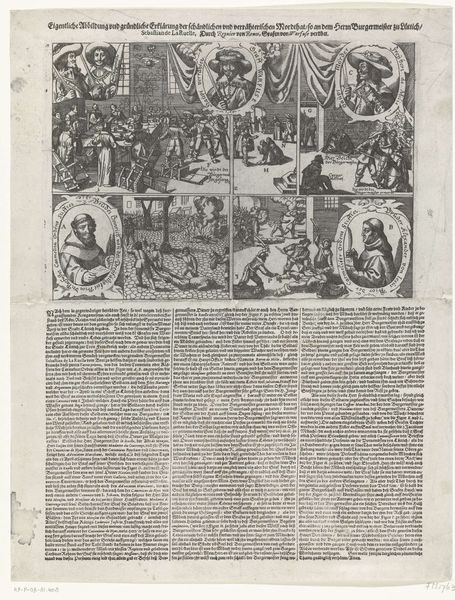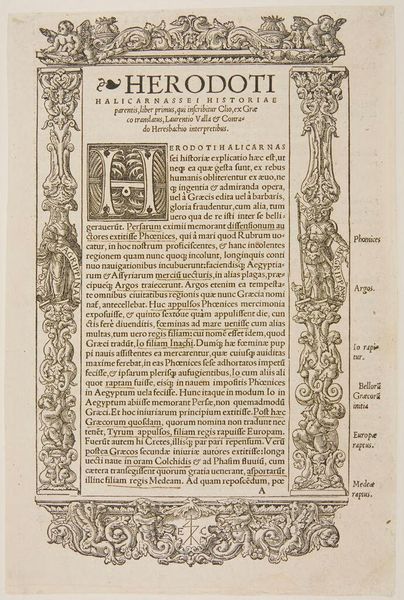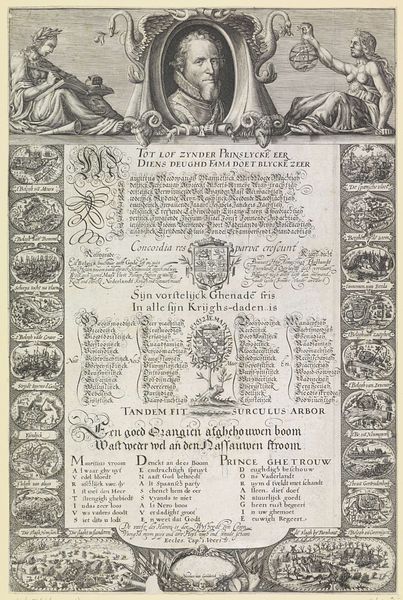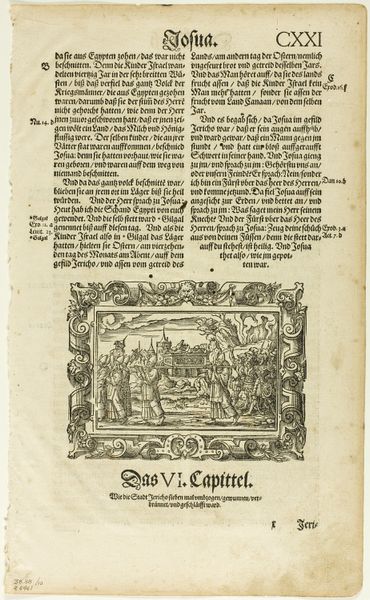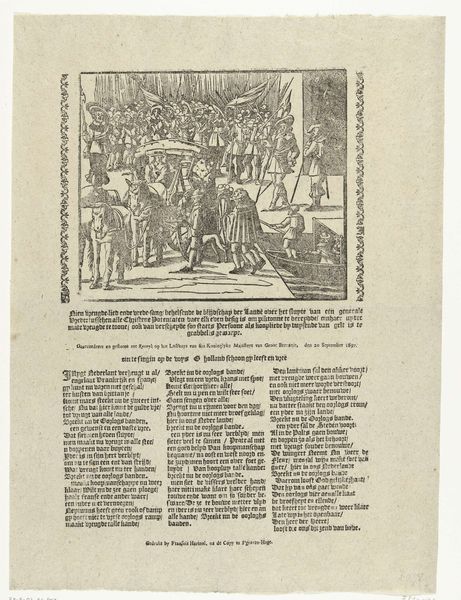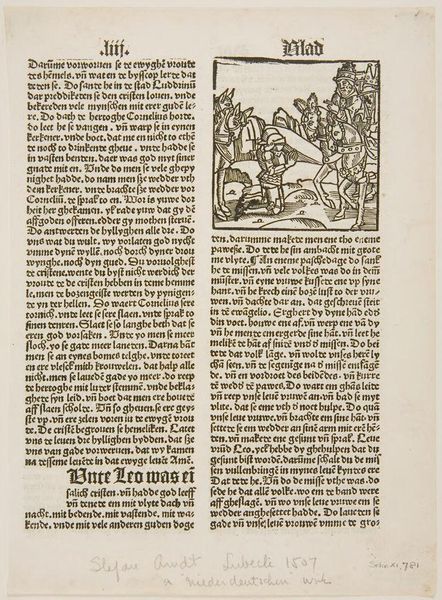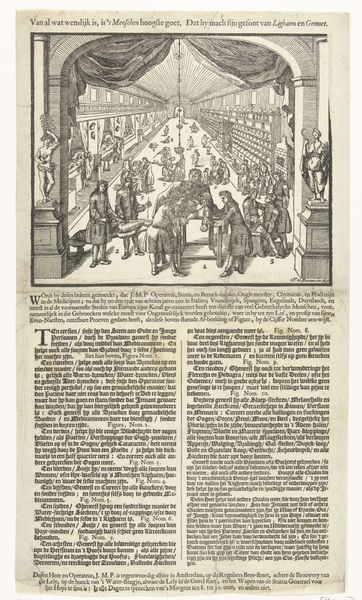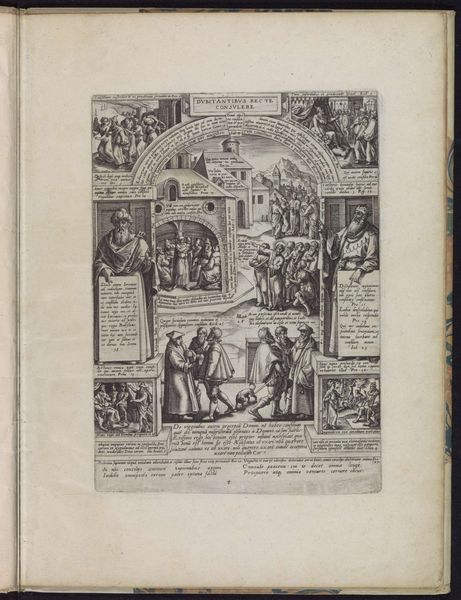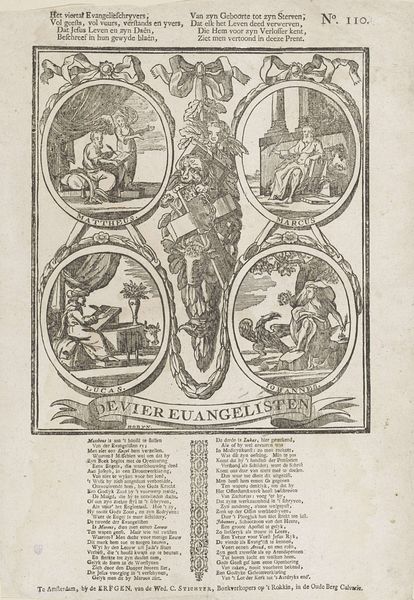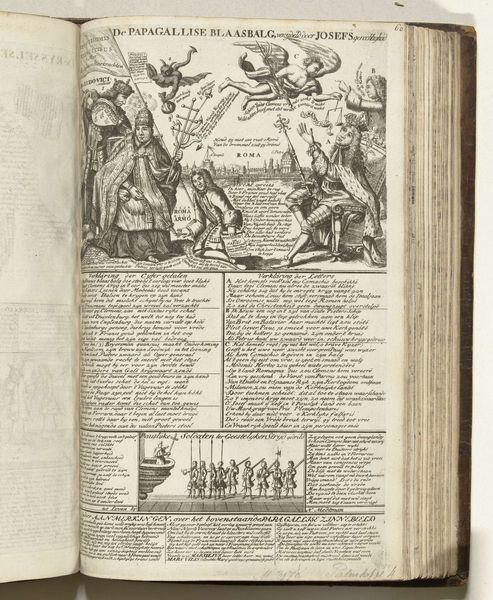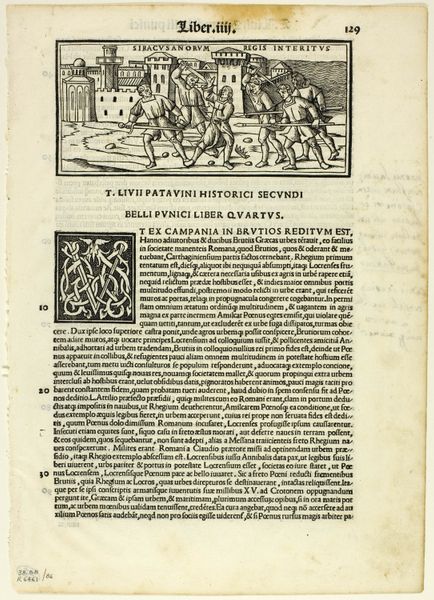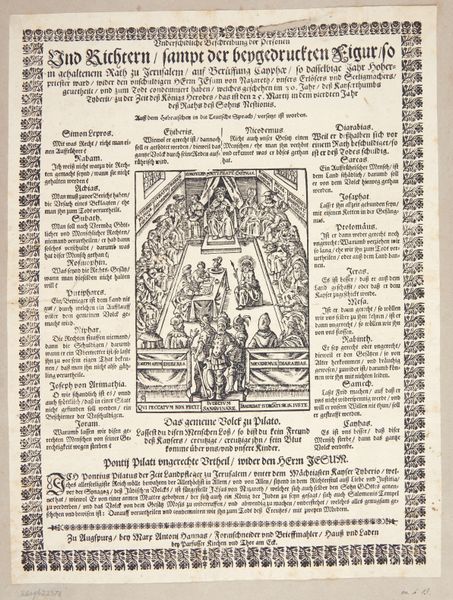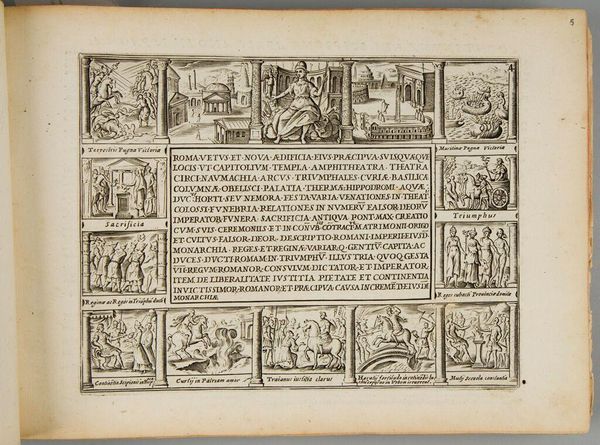
print, textile, paper, ink, engraving
#
portrait
#
baroque
#
dutch-golden-age
# print
#
textile
#
paper
#
ink
#
history-painting
#
engraving
Dimensions: height 385 mm, width 261 mm
Copyright: Rijks Museum: Open Domain
Curator: Looking at this complex image, we see “Blad over het praalbed van prinses Anna, 1759,” or "Sheet on the ceremonial bed of Princess Anna, 1759," by Barent Koene. It’s an engraving that offers us a glimpse into a specific historical event. Editor: It strikes me as intensely detailed and somewhat cluttered. The different vignettes and emblems seem to vie for attention. The overall effect is one of baroque excess, almost theatrical. Curator: The theatricality comes through in the subject, the 'praalbed', or ceremonial bed. It was common practice to display the deceased of royal lineage, allowing the public to pay their respects, or, if one were skeptical, solidify succession practices with visual display. Death rituals are powerful symbolic acts. The iconography tells us volumes about societal values. Editor: Speaking formally, the arrangement is fascinating. The composition moves the eye through a hierarchy of images: from grand emblematic crests and heraldic devices at the top, moving down to depictions of Princess Anna’s mourning scene and text blocks, almost like different tiers of importance or significance. Curator: Precisely! These emblems - crowns, lions, intricate floral arrangements - they are all potent signifiers of royalty, power, and lineage, aren't they? The images broadcast legitimacy and reinforce the perceived natural order. Note the image's multiple languages that signal an expansive, cosmopolitan, multilingual empire, as the local Dutch culture began trading further afield in that time period. Editor: The use of line and shadow gives some weight to the image despite being just ink on paper. There's real texture implied in the rendering of textiles and the dramatic architecture on display, further giving dimension to the portrayed royalty, making them seem not necessarily "real," but, perhaps more fittingly, regal and "more than real". Curator: A point well taken, in addition to making the symbols and family legacy also more “than life”. Think about the psychological impact; these symbols perpetuate myths about the subject of this image while continuing, for example, the Habsburg, Bourbon, or Stuart cultural presence. Editor: Looking closer, one has to appreciate the skill with which Koene uses such basic means to convey complexity of theme and richness. Curator: Agreed. Beyond the artistic technique, prints such as this functioned as historical records but, arguably more importantly, shaped collective memory through repeated dissemination and re-interpretation. Editor: The layering of symbolic communication we’ve unpicked, here, will likely speak to audiences for years to come.
Comments
No comments
Be the first to comment and join the conversation on the ultimate creative platform.
